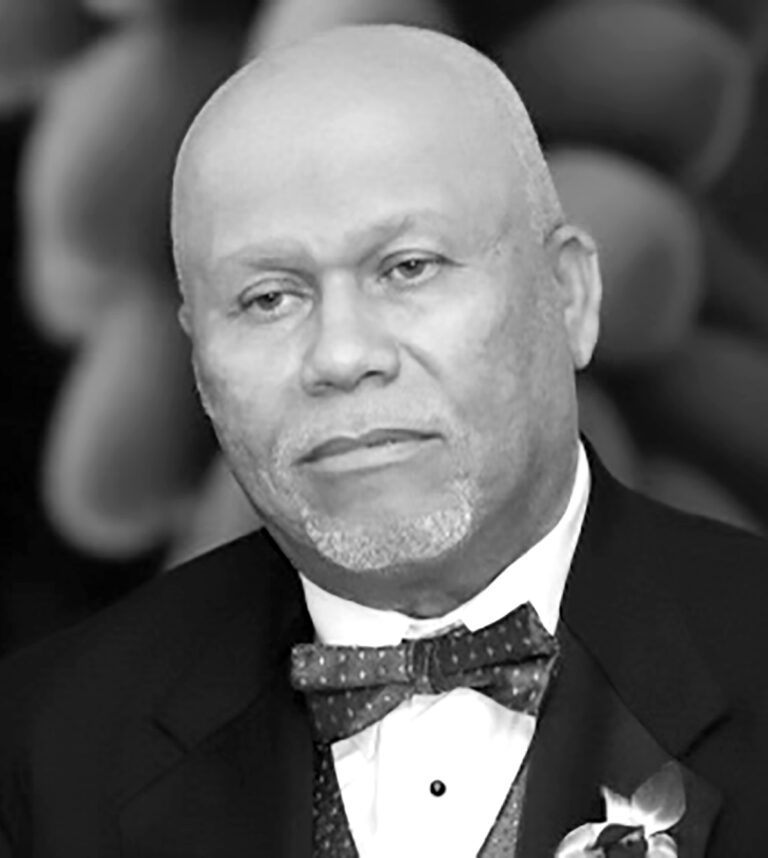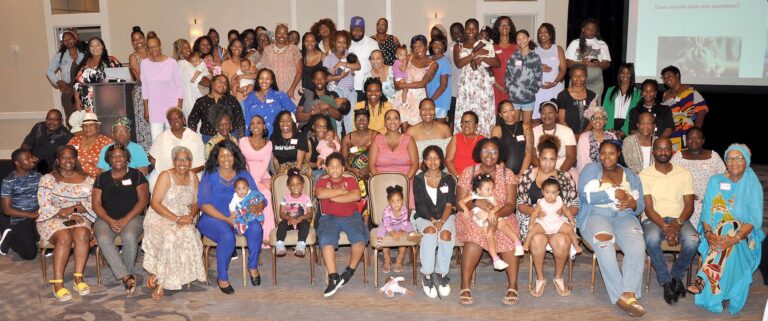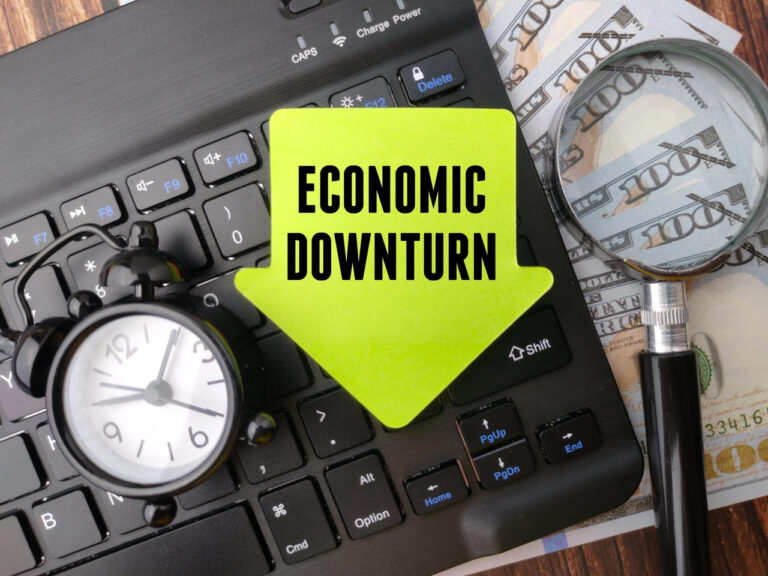By Nicquel Terry Ellis CNN, CNN
(CNN) — As a news anchor in New York, Cathleen Trigg-Jones said she experienced firsthand the discrimination women of color face in the male-dominated entertainment industry.
So, in 2019, she made a career pivot and launched iWoman TV — a media company led by women, featuring shows with female leads.
The only problem was she needed money to sustain the business. Trigg-Jones said she applied for funding from grant groups, venture capital funds and investors, but most of them denied her. She said she was told her company wasn’t making enough money and it was too new.
But the Fearless Fund – a Black women-owned venture capitalist firm that invests in women of color – took a chance on Trigg-Jones and her company. In 2022, the group awarded iWoman TV a $20,000 grant, Trigg-Jones said.
The grant allowed her to scale operations and increase funding for female content creators to start or finish films projects.
“Every little bit helps when you’re a Black female trying to start from scratch to build a business in a world that is not designed to see you succeed,” Trigg-Jones said. “The barriers are expansive.”
But the Fearless Fund’s grant program for businesses owned by women of color has recently faced a legal challenge from the American Alliance for Equal Rights (AAER), a conservative group that claims the venture capitalist firm’s grants amount to racial discrimination under the Civil Rights Act of 1866.
Late last month, a federal appeals court granted the Alliance’s motion to temporarily block the Fearless Fund from awarding grants exclusively to Black women entrepreneurs.
CNN has reached out to the Fearless Fund for comment on the ongoing lawsuit.
The Alliance is led by conservative legal strategist Edward Blum, the same attorney behind the Supreme Court case that dismantled affirmative action in college admissions. In August, Blum also sued two international law firms over their diversity fellowships but dropped one of the lawsuits after the firm decided to open its fellowship to all associates.
In an email, Blum told CNN he believes his legal campaign against affirmative action and grant programs like those offered by the Fearless Fund is ultimately a question of fairness.
“Our nation’s civil rights laws do not permit racial distinctions because some racial groups are overrepresented in various endeavors, while others are under-represented,” Blum said in the email.
The AAER’s legal challenges have left civil rights activists and Black business leaders anticipating the conservative group’s next lawsuit and whether Blum will continue to target programs that exclusively serve people of color.
Black business leaders told CNN the lawsuits, if successful, could stand to undo decades of progress toward leveling the playing field for Black and brown people in the workplace and small business sector.
“It definitely opens up a Pandora’s box,” Trigg-Jones said. “We all should be worried.”
Trigg-Jones said programs such as the Fearless Fund wouldn’t be necessary if there were equal opportunities for Black business owners to obtain funding.
According to a 2019 report from American Express, Black women are the fastest growing demographic of entrepreneurs in the country.
But the intersectionality of being Black and a woman puts the odds against them when it comes to securing finances for those businesses.
Black business owners are turned down for loans at a rate three times higher than White business owners, according to a 2020 analysis of small businesses by Goldman Sachs.
And in 2020, US businesses founded only by women received about 2% of venture capital funding, according to an analysis of female founders and investors in venture capital by PitchBook, an organization that compiles data and research on global capital markets.
“Women of color are the least funded but the most founded,” Fearless Fund co-founder and CEO Arian Simone told CNN last month.
Though he acknowledged the disparities exist, Blum told CNN “venture capital funding gaps between the races is never a legal or moral justification to exclude certain men and women from public programs by race or ethnicity.”
He said AAER “believes it is legally permissible to provide benefits to businesses and individuals who are under-resourced but those benefits must be made available to all races and ethnicities.”
But some Black entrepreneurs insist they need dedicated funding resources to gain equal footing with their White counterparts.
Rashae Barnes, founder of Evals Equity, said she decided to create an investment fund for businesses owned by women of color last year after facing her own roadblocks to entrepreneurship.
Barnes, who owns a public relations firm and a spice company, said she struggled to gain access to capital because the interest rates for business loans were too high.
With Evals Equity, Barnes said she has been able to raise more than $100,000 and has helped fund more than 40 women of color entrepreneurs. Their businesses have ranged from hair salons and tech companies to tutoring programs.
Barnes also created National Black Funding Day, celebrated on Sept. 30, to raise awareness of the struggles Black entrepreneurs face with funding.
“We just want an equal playing field,” Barnes said. “If we were incorporated in the allocation of funds to begin with … we wouldn’t have to create programs or funds to help people who look like us.”
‘A pin in the progress’
Kaycea Campbell, chair of the economics department at Pierce College Los Angeles, said she expects there will be more legal challenges to diversity initiatives moving forward.
She said the nation’s political and legal landscape is shifting with more Republican lawmakers vilifying diversity, equity and inclusion programs and a conservative majority on the Supreme Court gutting affirmative action.
“There are huge implications for a lot of diversity, equity, inclusion initiatives,” Campbell said. “There is a sense of caution. Companies are worried about being sued or spending money on programs that could later be reversed. So, it has kind of put a pin in the progress.”
The net worth of the typical Black household in 2022 was $44,900, according to the Federal Reserve’s latest Survey of Consumer Finances, a triennial report that provides a comprehensive look at Americans’ financial circumstances.
That’s up more than 61% for Black households since the Fed’s last survey in 2019.
Even with these gains, their net worth remains only a fraction of that of White households, whose median wealth was $285,000 last year, up 31% from 2019, according to the Fed’s survey.
Lenwood Long, president and CEO of the African American Alliance of Community Development Financial Institution CEOs — a national coalition of CEOs of venture capital funds, credit unions and loan funds — said centuries of discrimination and systemic racism has meant Black Americans have long had to fight an uphill battle for economic parity and justice.
Long said Black entrepreneurs often lack the generational wealth that enables people to start businesses without loans. Many also lack the collateral needed to get approved for loans at major financial institutions, he said.
But groups like the Fearless Fund, he said, are helping Black people gain access to capital so they can build that wealth.
Long said the conservative challenges feel like a setback for Black Americans.
“It’s sad and disgraceful and shameful,” he said.
“They are saying you can’t be intentional in directing funds to groups that have been historically denied access to capital and access to education. Those are two areas that will address the racial wealth gap.”
CNN’s Jaide Timm-Garcia, Isabel Rosales and Tami Luhby contributed to this report
















